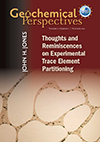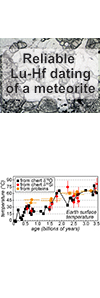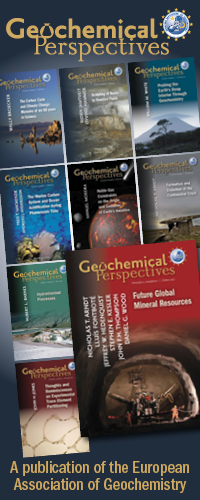
In Thoughts and Reminiscences on Experimental Trace Element Partitioning, John H. Jones (NASA Johnson Space Center)
reviews the history of experimental trace element partitioning from his personal point of view. In so doing, John considers experimental and analytical complexities, simple phase equilibria, and thermodynamic considerations. John also recounts personal interactions with other geochemists and petrologists.
This article is open access and EAG members will receive the print version shortly.

The 176Lu-176Hf systematics of ALM-A: A sample of the recent Almahata Sitta meteorite fall
R. Bast, E.E. Scherer, A. Bischoff
The application of Lu-Hf chronometry to meteorites has been compromised by arbitrary results such as dates up to 300 Myr older than the Pb-Pb age of the Solar System, unsubstantiated isochron scatter among different meteorite fractions, and varying initial Hf isotope ratios (176Hf/177Hfi). [...]
Warm Archean oceans reconstructed from oxygen isotope composition of early-life remnants
R. Tartèse, M. Chaussidon, A. Gurenko, F. Delarue, F. Robert
Deciphering the surface conditions on the Earth during Archean times (> 2.5 billion years ago – Ga) is crucial to constrain the conditions that promoted the development of life. The progressive shift through time of the oxygen isotopic compositions of Precambrian siliceous sediments – the so-called cherts – has been interpreted as indicating a secular decrease of seawater temperature by 50-80 °C from the early Archean to the present-day. [...]
































